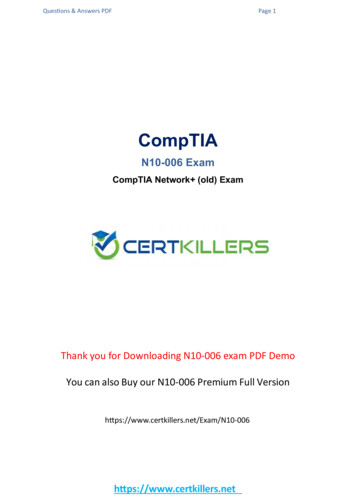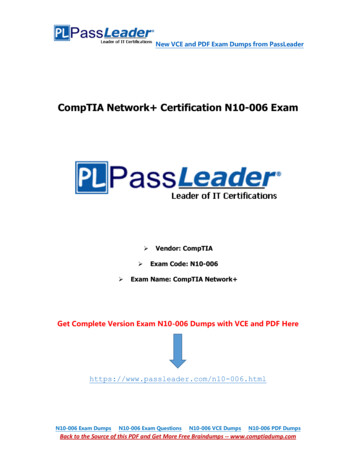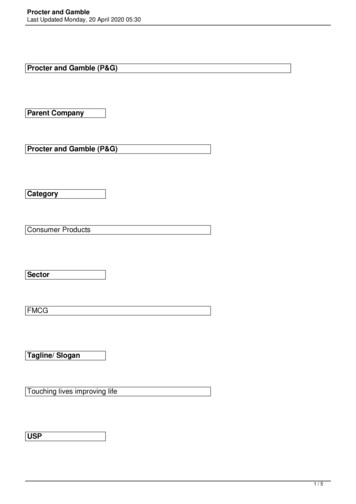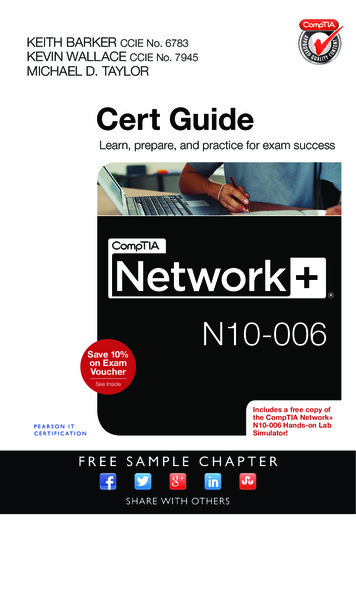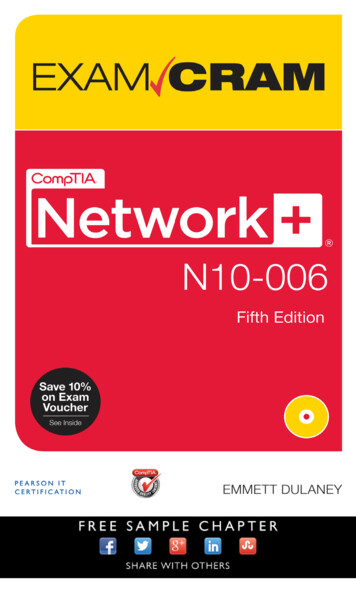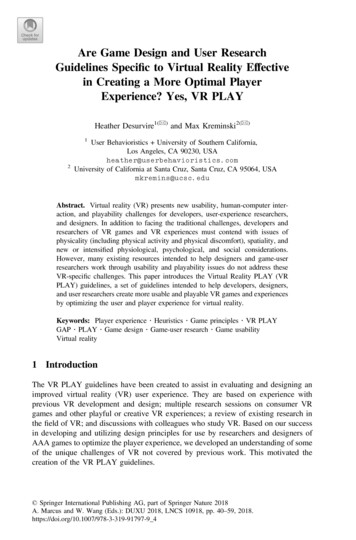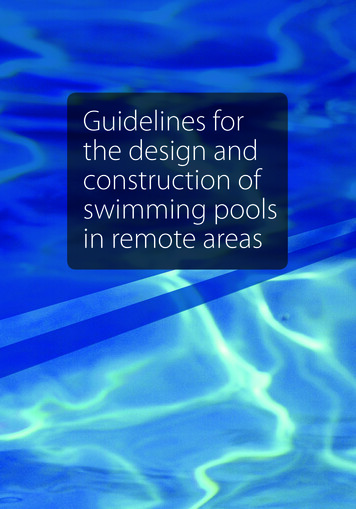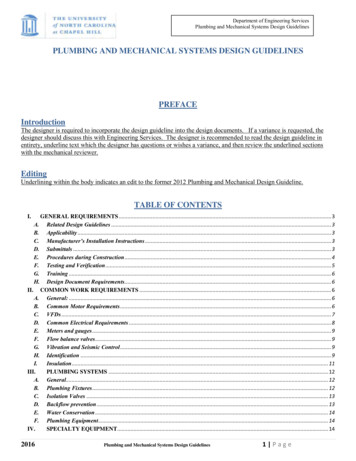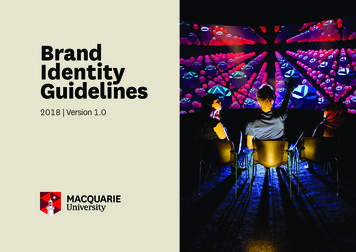
Transcription
STP-PT-006DESIGNGUIDELINESFORHYDROGEN PIPINGAND PIPELINES
Date of Issuance: December 7, 2007This report was prepared as an account of work sponsored by ASME Pressure Technology Codes &Standards and the ASME Standards Technology, LLC (ASME ST-LLC).Neither ASME, ASME ST-LLC, the authors, nor others involved in the preparation or review of this report,nor any of their respective employees, members, or persons acting on their behalf, makes any warranty, expressor implied, or assumes any legal liability or responsibility for the accuracy, completeness, or usefulness of anyinformation, apparatus, product, or process disclosed, or represents that its use would not infringe uponprivately owned rights.Reference herein to any specific commercial product, process, or service by trade name, trademark,manufacturer, or otherwise does not necessarily constitute or imply its endorsement, recommendation, orfavoring by ASME ST-LLC or others involved in the preparation or review of this report, or any agencythereof. The views and opinions of the authors, contributors, reviewers of the report expressed herein do notnecessarily reflect those of ASME ST-LLC or others involved in the preparation or review of this report, or anyagency thereof.ASME ST-LLC does not take any position with respect to the validity of any patent rights asserted inconnection with any items mentioned in this document, and does not undertake to insure anyone utilizing apublication against liability for infringement of any applicable Letters Patent, nor assumes any such liability.Users of a publication are expressly advised that determination of the validity of any such patent rights, and therisk of infringement of such rights, is entirely their own responsibility.Participation by federal agency representative(s) or person(s) affiliated with industry is not to be interpretedas government or industry endorsement of this publication.ASME is the registered trademark of The American Society of Mechanical Engineers.No part of this document may be reproduced in any form,in an electronic retrieval system or otherwise,without the prior written permission of the publisher.ASME Standards Technology, LLCThree Park Avenue, New York, NY 10016-5990ISBN No. 0-7918-3137-xCopyright 2007 byASME Standards Technology, LLCAll Rights Reserved
Design Guidelines for Hydrogen Piping and PipelinesSTP-PT-006TABLE OF CONTENTSFOREWORD. vABSTRACT . vi1 INTRODUCTION . 12 DEFINITIONS. 23 REVIEW OF HYDROGEN EFFECTS ON PIPING AND PIPELINE MATERIALS. 33.1 Overview of Metallic Pipe Materials . 33.1.1 Hydrogen Damage and the Influence of Pressure . 33.1.2 Hydrogen Stress Cracking. 53.2 Overview of Nonmetallic Pipe Materials . 53.2.1 Thermoplastic Pipe Considerations. 53.2.2 Fiber-Reinforced Lined Pipe . 64 DISCUSSION OF DESIGN FACTOR RATIONALE. 84.1 Metallic Pipe Materials . 84.1.1 Carbon Steels. 84.1.2 Low-Alloy Carbon Steels. 94.1.3 Austenitic Stainless Steels. 94.1.4 Martensitic, Ferritic and Duplex Stainless Steels. 104.1.5 Aluminum Alloys. 104.1.6 Copper and Copper Alloys . 104.1.7 Titanium Alloys. 104.1.8 Cast Irons. 105 DESIGN LIFE . 115.1 Piping Systems . 115.2 Pipeline Systems. 116 NONDESTRUCTIVE EXAMINATION (NDE) . 126.1 Piping Systems . 126.1.1 Industrial Piping Systems. 126.1.2 Commercial and Residential Piping Systems. 126.2 Pipeline Systems. 126.2.1 Pipelines Whose Design Pressure is 2200 psi and Pipe Material has a SMYS 52ksi . 136.2.2 Pipelines Whose Design Pressure is Larger than 2200 psi (15 MPa) or PipeMaterial Has a SMYS Larger than 52 ksi (358 MPa) . 137 IN-SERVICE INSPECTION RECOMMENDATIONS FOR PIPING AND PIPELINESYSTEMS . 147.1 In-service Inspection/Integrity Management of Industrial, Commercial and ResidentialPiping Systems . 147.1.1 Industrial Piping Systems. 147.1.2 Commercial and Residential Piping Systems. 167.2 Pipeline Systems. 168 RECOMMENDATIONS FOR RESEARCH ON MATERIALS IN DRY HYDROGEN GASSERVICE. 188.1 Carbon Steels. 18iii
STP-PT-006Design Guidelines for Hydrogen Piping and Pipelines8.2 Stainless Steels.198.3 Other Metals .198.4 Plastics .199 TABLES OF DESIGN FACTORS FOR METALLIC PIPE MATERIALS .219.1 Design Factor Table Population Methodology .239.1.1 First or Base Row Population .239.1.2 Population of Columns .23REFERENCES .26ACKNOWLEDGMENTS .29LIST OF TABLESTable 1 Design Factors for Piping, Carbon Steel.21Table 2 Design Factors for Piping, Low-and Intermediate-Alloy Steels.21Table 3 Design Factors for Pipeline, Carbon Steel Location Class 3 .22Table 4 Design Factors for Pipeline, Carbon Steel Location Class 4 .22LIST OF FIGURESFigure 1 Reduction of Tensile Properties in Hydrogen from those in Helium as a Function ofHydrogen Pressure for ASTM A-302 .4Figure 2 Schematic of a Cross Section of a Pipeline .24LIST OF EQUATIONSEquation 1 Steady State Lattice Hydrogen Concentration.23Equation 2 Lattice Hydrogen Concentration—Functions.24Equation 3 Lattice Hydrogen Concentration—Experimentally Measured Safe .24Equation 4 Stresses in Cylindrical Vessel under Internal Pressure.24Equation 5 Hydrostatic Stress .24Equation 6 Safety Condition—Hoop Stress.25Equation 7 Safety Condition—Design Stress .25Equation 8 Tensile and Yield Stress .25iv
Design Guidelines for Hydrogen Piping and PipelinesSTP-PT-006FOREWORDCommercialization of hydrogen fuel cells, in particular fuel cell vehicles, will require development ofan extensive hydrogen infrastructure comparable to that which exists today for petroleum. Thisinfrastructure must include the means to safely and efficiently generate, transport, distribute, store,and use hydrogen as a fuel. Standardization of pressure retaining components, such as tanks, pipingand pipelines, will enable hydrogen infrastructure development by establishing confidence in thetechnical integrity of products.Since 1884, the American Society of Mechanical Engineers (ASME) has been developing codes andstandards (C&S) that protect public health and safety. The traditional approach to standardsdevelopment involved writing prescriptive standards only after technology has been established andcommercialized. With the push toward a hydrogen economy, government and industry have realizedthat they cannot afford a hydrogen-related safety incident that may undermine consumer confidence.As a result, ASME has adopted a more anticipatory approach to standardization for hydrogeninfrastructure which involves writing standards with more performance-based requirements in parallelwith technology development and before commercialization has begun.The ASME B31 Standards Committee has established a new Section Committee, B31.12, to developnew Code rules for piping and pipelines in hydrogen infrastructure applications. Research activitiesare being coordinated to develop data and technical reports concurrent with standards developmentand have been prioritized per B31.12 Section Committee needs.The Technical Reports to be developed will establish data and other information to be used to supportand facilitate separate initiatives to develop ASME standards for the hydrogen infrastructure. Aninitial report, developed under the sponsorship of the National Renewable Energy Laboratory(NREL), Hydrogen Standardization Interim Report for Tanks, Piping and Pipelines was, issued onMay 3, 2005. This interim report addressed priority topical areas within each of the four pressuretechnology applications for hydrogen infrastructure development: storage (stationary) tanks, transporttanks, piping and pipelines and vehicle fuel tanks.The present report builds on the work of the interim report to develop specific recommendations fordesign guidelines for hydrogen piping and pipelines.Established in 1880, the American Society of Mechanical Engineers (ASME) is a 127,000-memberprofessional not-for-profit organization focused on technical, educational and research issues of theengineering and technology community. ASME conducts one of the world's largest technicalpublishing operations, holds numerous technical conferences worldwide, and offers hundreds ofprofessional development courses each year. ASME maintains and distributes 600 Codes andStandards used around the world for the design, manufacturing and installation of mechanicaldevices. Visit www.asme.org for more information.The ASME Standards Technology, LLC (ASME ST-LLC) is a not-for-profit Limited LiabilityCompany, with ASME as the sole member, formed in 2004 to carry out work related to newlycommercialized technology. The ASME ST-LLC mission includes meeting the needs of industry andgovernment by providing new standards-related products and services, which advance the applicationof emerging and newly commercialized science and technology and providing the research andtechnology development needed to establish and maintain the technical relevance of codes andstandards. Visit www.stllc.asme.org for more information.v
STP-PT-006Design Guidelines for Hydrogen Piping and PipelinesABSTRACTThis report provides recommendations and guidance to the ASME B31.12 Hydrogen Piping andPipelines Section Committee for design factors for metallic and nonmetallic pipe materials when usedin a dry hydrogen gas environment; design life considerations; nondestructive examination (NDE)recommendations; in-service inspection (integrity management) recommendations; research needsand recommendations. The scope of this report includes all common metallic piping and pipelinematerials used in the construction of piping and pipeline systems, of seamless and weldedconstruction; composite reinforced welded or seamless metallic-lined piping and pipelines that arecurrently commercially manufactured and for which technical design data is available; compositereinforced plastic-lined piping and pipelines that are currently commercially manufactured and forwhich technical design data are available. Design factors are developed considering the operatingconditions, internal hydrogen environment within the piping and pipeline systems and the effect ofdry hydrogen gas on the material of construction. Composite piping and pipeline line pipe areconsidered as hoop-wrapped construction with liners capable of withstanding longitudinal loads.Other examination and inspection recommendations are made using similar considerations. Researchrecommendations are made based on lack or vagueness of existing data or where the research resultswere not readily adaptable to engineering use.vi
tanks, piping and pipelines and vehicle fuel tanks. The present report builds on the work of the interim report to develop specific recommendations for design guidelines for hydrogen piping and pipelines. Established in 1880, the American S
